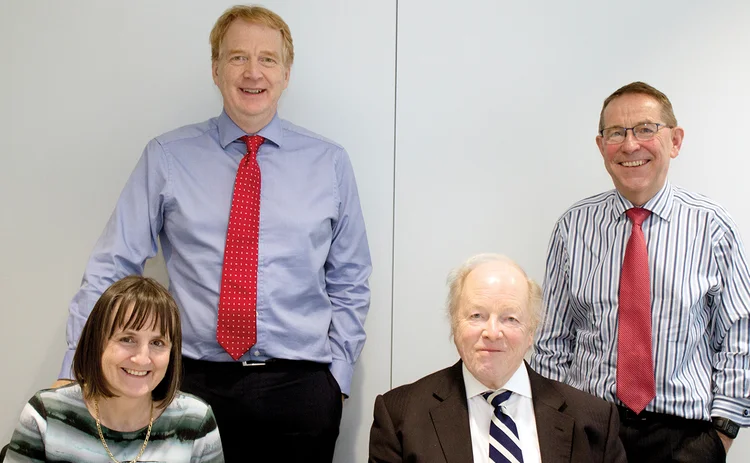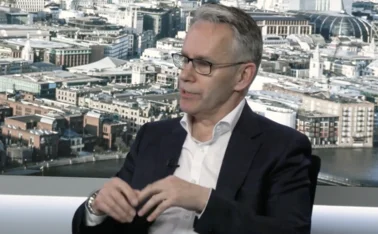
Roundtable: The pre-action protocol at 20

Over two decades ago, a quintet sat down to formulate the pre-action protocols for personal injury claims. Post gathered four [Nigel Tomkins, then of Thompsons could not make it] back together to reflect on their influence, lessons learned and the present legal landscape
Around 20 years ago, insurance claims were industrialised through unprecedented collaboration between claims lawyers and insurers. For some in the industry, the pre-action process is but a distant memory; others may not even be aware of it due to how totally ingrained it is in everyday proceedings, with millions of ‘letters of claim’ sent since then that follow the script of the pre-action protocol that the team prepared.
Before the pre-action protocol, the personal injury claims environment was an adversarial one and frustration was felt by insurers and claim lawyers alike. Indeed, prior to the reforms, the pre-action process was a seven-day letter before action – no details of the claim, sometimes not even a date of accident. However, urgency was only really felt by the parties involved when an enquiry was carried out by Lord Woolf at the time; his interim report made it clear that clarity and structure were needed.
At the time, Terry Renouf was a partner at Berrymans Lace Mawer, now rebranded BLM. He highlighted the need for insurers to get involved, pointing out that without their input, the pre-action process would only address one side of the coin.
“I responded to some comments following the interim report and that became focal at Berrymans, so we responded to the interim report,” said Renouf, now consultant at BLM, at a roundtable organised by Post.
“One of the interim report recommendations was around getting some structure to the pre-action process, rather than just this ‘pay a claim within seven days or we sue’ type of situation.
“I was invited to a meeting at the Lord Chancellor’s Department to discuss the pre-action process. I pointed out that it was my insurer clients who dealt with cases at this point and that their input would be essential. They agreed that it was a good idea.”
Changing relationships
There had been two agreements that, with hindsight, had presaged the change in relationships between insurers and claims lawyers. Thompson solicitors and insurers agreed processes for handling vibration white finger, an industrial injury triggered by hand-held machinery, and noise-induced hearing loss. When Thompsons and Iron Trades Insurance began to work on those claims that the relationship between the two parties improved.
“The relationship with Thompsons had gone from being one of pure war to being much more consensual and working well,” recalls Ashton West, who worked for Iron Trades before it was bought out by QBE.
“The agreements really did change with the NIHL agreements, because up until then our relationship with Thompsons had been very adversarial.
“After a NIHL claim suit where the defendant won, Thompsons seemed to think the war would continue but we actually sat down with them to go through the guidelines and see if we could make something work.”
Insurers and claims lawyers working together probably goes unnoticed now as it is the norm. However, before the protocol was put in place, lawyers would often flat out refuse to engage with insurers on claims. Before parties from each side began working together on NIHL and VWF claims, the relationships between the two remained frosty.
“Thompsons used to have a rule that it wouldn’t engage with insurers on claims suits. It wasn’t the right way to do things because you can actually settle cases properly, if people came in to talk,” said Frances McCarthy, who was a partner at Pattinson & Brewer solicitors at the time.
“Insurers would come in to us with a stack of cases and tell us that they knew nothing about what had happened but they knew they wanted to settle it. But you would also have some insurers who would just come in on a fishing expedition. They never had any intention of settling the claim but they wanted to find out as much as they could from us so that they could deny it more effectively in the future.”
Similarly, McCarthy said that an increased collaboration between insurers and claims lawyers led to both parties finding a way in which to fully integrate the pre-action protocol into their proceedings for different types of claims.
“Once we spoke to insurers, we realised that we actually had quite a lot in common with them and that we could sit down with them and actually work things out – it was to everybody’s benefit,” said McCarthy.
“We would have clients coming to us and they wouldn’t know what to do and would be in the worst of all possible worlds. They’d be right up against limitation, and either issuing with a really dodgy case, or turning it down when the client’s expectations were really high. So that was a really big difference with protocols and a big side effect was that we started to trust each other a bit more.”
Lacking information
It was about medical claims and the admission of liability that the two sides did come to blows. There were some disagreements as to whether medical reports needed to be submitted before a claim was taken forward. Renouf said that insurers were often lacking information as to how big claims were up to the point of issue of the proceedings.
“The claimants wanted an admission of liability before we moved on to quantum as there were funding issues to be considered before obtaining medical reports,” Renouf said.
“There was a lot more defendant pushback, because the business model of insurance is that we need to know if it’s a big or a small claim. Tension still does exist and we often hear complaints these days that a small claim is put forward and, lo and behold, a big claim appears once an admission has been made.”
The three-month time limit placed on claims investigations, as a result of the pre-action protocol, helped insurers weed out spurious claims and save money. There were disagreements about the length of time the limit should be set at.
“At the time, my standpoint was that I didn’t want three months, I wanted six,” said Jim Prew, who was then an assistant UK claims manager at Commercial Union Assurance. “It saves insurers a lot of time and money if they can get to a certain point sooner, especially if they are taking out the bad claims.
“Comparing it to today, we did resolve what to do about the medical experts. But if you look even in today’s headlines around Medco, it’s medical reporting agencies that are taking judicial review applications against Medco. But there are so many players in the personal injury chain now and it has gotten very complicated.”
Decision criticised
The decision made by former Labour minister Geoff Hoon to make the success fee and premium recoverable from the defendant insurers is said to have paved the way for claims farming and dodgy claims management companies. Those around at the time have criticised Hoon’s decision for leading to the cost wars.
“Hoon had been persuaded by the legal experts because one of his senior officials knew a senior guy in the legal expenses market,” said West. “It was very clear that the decision had been made before the government had even spoken to the defendant community and so nobody could persuade Hoon that he had been speaking to the wrong market. This led to the commoditisation of claims and the growth of CMCs because they were looking at claimants as business opportunities.”
Due to there being no cap on fees, CMCs were on a mission to lure claimants into court cases that would end up costing insurers extortionate amounts. Insurers were becoming the cash cow that CMCs would go on to mercilessly milk. CMCs were looking to make quick bucks – but trade union lawyers were left to take on the big risk cases.
“You’d have these ‘by-the-sea’ firms that thought this was a brilliant opportunity,” said McCarthy.
“The recoverable premiums presented these firms with an entirely different model whereby they could get money from claimants. The lawyers who had been doing the hard work and who were trusted by insurers were suddenly competing with these CMCs who were raking in the claims and selling them for cheap – they weren’t interested in the clients. They would only take a case on a rear-end shunt, they didn’t take on any risk, while us trade union lawyers were left battling with big cases.”
However, the impact of the pre-action protocol did mean that insurers were able to better predict the outcome of certain claims. This came in particularly handy at a time when there was a significant rise in motor claims.
“There was a large volume of motor claims. The pre-action protocol meant that this large volume could now be facilitated by making the process predictable to some degree. Because insurers were then able to make an assessment as to what resources were needed and what they needed to commit to,” said Renouf.
McCarthy warned, however, that litigation for personal injury and clinical negligence is at risk of dwindling away due to the costs that are involved.
“Litigation is going to just dwindle away. Certainly in the insurance sector, personal injury and clinical negligence litigation is just going to go. Because it’s all contingent. The operational costs of running it are so high now with the fees and all the other costs. We’re not making enough money per case and we have to settle them as cheaply as we can,” McCarthy said.
The team went on to draft the Disease Pre-action Protocol where defining disease claims meant that insurers and lawyers hit a bit of a fork in the road; no one was sure how to classify diseases in a way that could help parties assess claims more easily before bringing them forward.
“A hard thing about disease claims was actually finding a definition that would encompass all diseases,” said McCarthy.
“At one point, we had multiple diseases that we wanted to cover under the one definition. We had NIHL, VWF, stress, asbestos exposure, and dermatitis. We needed a definition that would cover all of them and they had to be diseases that occurred over long periods of time.”
Side effects of the protocol
One of the side effects of the protocol is the Claims Portal. This is throwing up concerns over litigants in person under the banner of whiplash reforms.
“The claims portal was the next step in the process and the next stage is what’s under the banner of the whiplash reforms,” said West.
“This step is to build a web service facility for litigants in person. That’s what the claims portal is: a web service facility for people to help them through the process. It will be a tariff-based process and claimants will need a medical report. Who funds that upfront is a policy decision that’s still yet to be made. None of the evidence will be given in person and it raises questions about how you assess these claims.”
West also questioned the ability of the government and businesses to dedicate time to address the issue.
“The problem is the tenure: the tenure in office limits the ability of people to solve problems. It’s the same with CEOs in business. If their life expectancy is three to four years, why are they going to invest in a 30-year project?” West questioned. “It’s the same with government. Anything that doesn’t win votes in the government’s running period is dead. That’s why this problem hasn’t been solved, and it won’t be.”
When it comes to upholding what was outlined in the pre-action protocol, there are structures in place to support it. However, the landscape has become far more complicated.
If a pre-action protocol was to be written up today, Prew said, it’s unlikely that it could be done in the same way because there are so many more players in the space.
“There are more structures in place to support it: the Civil Justice Council, Portal Co and Medco. But the moving parts have become much more complicated,” said Prew.
“Back when we were writing this, it really was insurers using solicitors, or dealing with the claims themselves. We now have a far more complicated landscape and there are all sorts of costs involved. There are also now all sorts of big medical agencies that will take an interest in the process. It’s unlikely that our contemporaries would be asked in this haphazard way to sit in a room and go and sort out a pre-action protocol.”
Further reading
Only users who have a paid subscription or are part of a corporate subscription are able to print or copy content.
To access these options, along with all other subscription benefits, please contact info@postonline.co.uk or view our subscription options here: https://subscriptions.postonline.co.uk/subscribe
You are currently unable to print this content. Please contact info@postonline.co.uk to find out more.
You are currently unable to copy this content. Please contact info@postonline.co.uk to find out more.
Copyright Infopro Digital Limited. All rights reserved.
As outlined in our terms and conditions, https://www.infopro-digital.com/terms-and-conditions/subscriptions/ (point 2.4), printing is limited to a single copy.
If you would like to purchase additional rights please email info@postonline.co.uk
Copyright Infopro Digital Limited. All rights reserved.
You may share this content using our article tools. As outlined in our terms and conditions, https://www.infopro-digital.com/terms-and-conditions/subscriptions/ (clause 2.4), an Authorised User may only make one copy of the materials for their own personal use. You must also comply with the restrictions in clause 2.5.
If you would like to purchase additional rights please email info@postonline.co.uk








